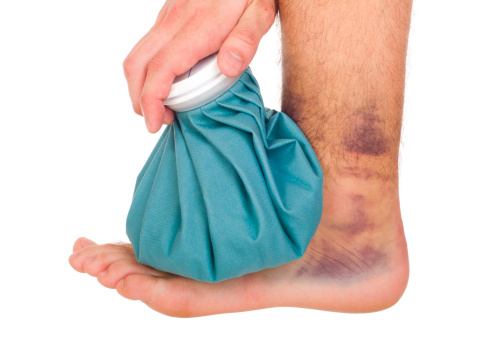Is it a sprain, strain or something else?

Whether you exercise regularly, play sports or take leisurely walks, one misstep can lead to an ankle injury, causing pain for days or more. But how can you tell if your injury is serious?
Dr. Zachary Domont, an Advocate Medical Group orthopedic surgeon at Advocate Condell Medical Center in Libertyville, Ill., says the first helpful step is knowing the difference between possible injuries:
- Sprain – stretching or tearing of ligaments
- Strain – stretching or tearing of tendons
- Tear – complete tear across the entire width of the ligament or tendon
“The most common symptom of these injuries is pain, although if the injury is significant enough, there may be associated instability,” says Dr. Domont. “If you are concerned that you may have suffered a sprain or strain, oftentimes, unless you hear or feel a true ‘pop,’ this is not an emergency.”
He adds that since most often these injuries are not serious, they can be managed with the RICE protocol:
- Rest
- Ice
- Compression
- Elevation
“If this has been tried for a reasonable time (determined by the patient) without satisfactory improvement, you should consult an orthopedic surgeon at that time,” says Dr. Domont.
Other than sprains and strains, Dr. Domont adds common injuries for those who exercise and play sports include:
- Plantar fasciitis: an overuse injury to the soft tissue structure that supports the bottom of the foot
- Lateral epicondylitis, more commonly known as “tennis elbow”: pain over the outside of the elbow caused by overuse of the upper extremity with repetitive elbow and wrist flexion/extension as well as supination/pronation (palm up/palm down)
- Rotator cuff tendinitis: overuse of the shoulder, which develops over time and is often described as achy pain in the lateral portion of the shoulder, worse with reaching overhead, behind one’s back, or across one’s body
- Trochanteric bursitis: pain over the lateral side of the hip with overuse
- Patellofemoral pain: pain underneath the kneecap worse with sit-to-stand exercises, doing squats/lunges, or using stairs and walking on incline/decline
If you receive no relief from the RICE protocol, seek medical attention for the pain you are experiencing.
Related Posts
Comments
2 Comments
About the Author
health enews staff is a group of experienced writers from our Advocate Health Care and Aurora Health Care sites, which also includes freelance or intern writers.


















Thank you I really liked this informative article…
I always wondered if attempting RICE before being seen by a physician, could this delay cause some injuries to not heal properly?
Was considering torn tendons when asking, but could it possibly be applicable for other situations? If you know of any I would be happy to find out what they may be.
Thank you
Hello! I could have sworn I’ve been to this site before but after checking through some of the post I realized it’s new to me.
Anyhow, I’m definitely happy I found it and I’ll be book-marking
and checking back often!